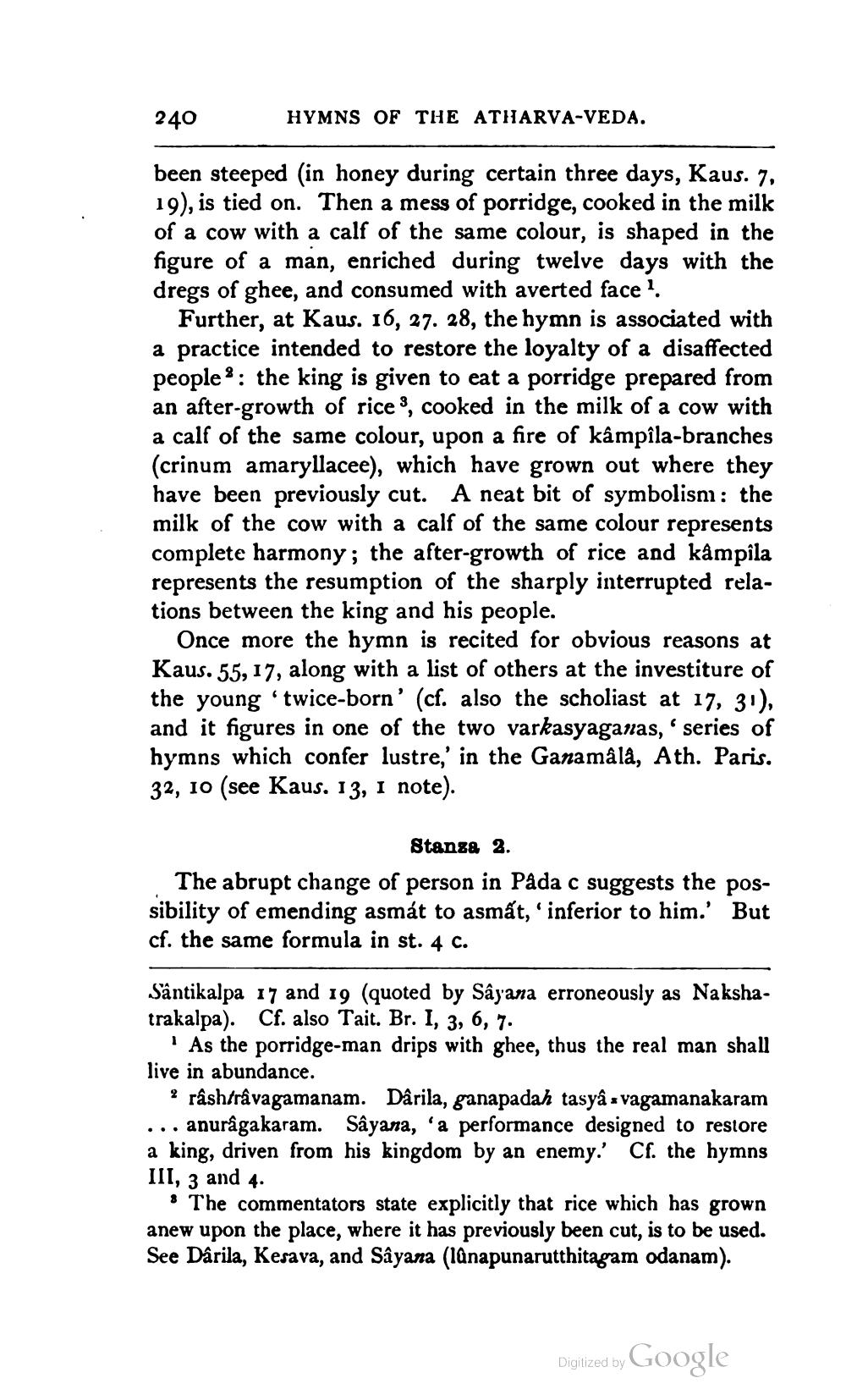________________
240
HYMNS OF THE ATHARVA-VEDA.
been steeped in honey during certain three days, Kaus. 7, 19), is tied on. Then a mess of porridge, cooked in the milk of a cow with a calf of the same colour, is shaped in the figure of a man, enriched during twelve days with the dregs of ghee, and consumed with averted face?
Further, at Kaus. 16, 27. 28, the hymn is associated with a practice intended to restore the loyalty of a disaffected people 8 : the king is given to eat a porridge prepared from an after-growth of rices, cooked in the milk of a cow with a calf of the same colour, upon a fire of kâmpila-branches (crinum amaryllacee), which have grown out where they have been previously cut. A neat bit of symbolism : the milk of the cow with a calf of the same colour represents complete harmony; the after-growth of rice and kampila represents the resumption of the sharply interrupted relations between the king and his people.
Once more the hymn is recited for obvious reasons at Kaus. 55, 17, along with a list of others at the investiture of the young 'twice-born' (cf. also the scholiast at 17, 31), and it figures in one of the two varkasyaganas, 'series of hymns which confer lustre,' in the Ganamala, Ath. Paris. 32, 10 (see Kaus. 13, 1 note).
Stanga 2. The abrupt change of person in Påda c suggests the possibility of emending asmát to asmát, 'inferior to him. But cf. the same formula in st. 4 C.
Ce.
Sântikalpa 17 and 19 (quoted by Sâyana erroneously as Nakshatrakalpa). Cf. also Tait. Br. I, 3, 6, 7.
As the porridge-man drips with ghee, thus the real man shall live in abunda
? râshtrâvagamanam. Dârila, ganapadah tasyâ : vagamanakaram ... anuragakaram. Sâyana, 'a performance designed to restore a king, driven from his kingdom by an enemy. Cf. the hymns III, 3 and 4.
* The commentators state explicitly that rice which has grown anew upon the place, where it has previously been cut, is to be used. See Dârila, Kesava, and Sâyana (lQnapunarutthitagam odanam).
Digized by Google




